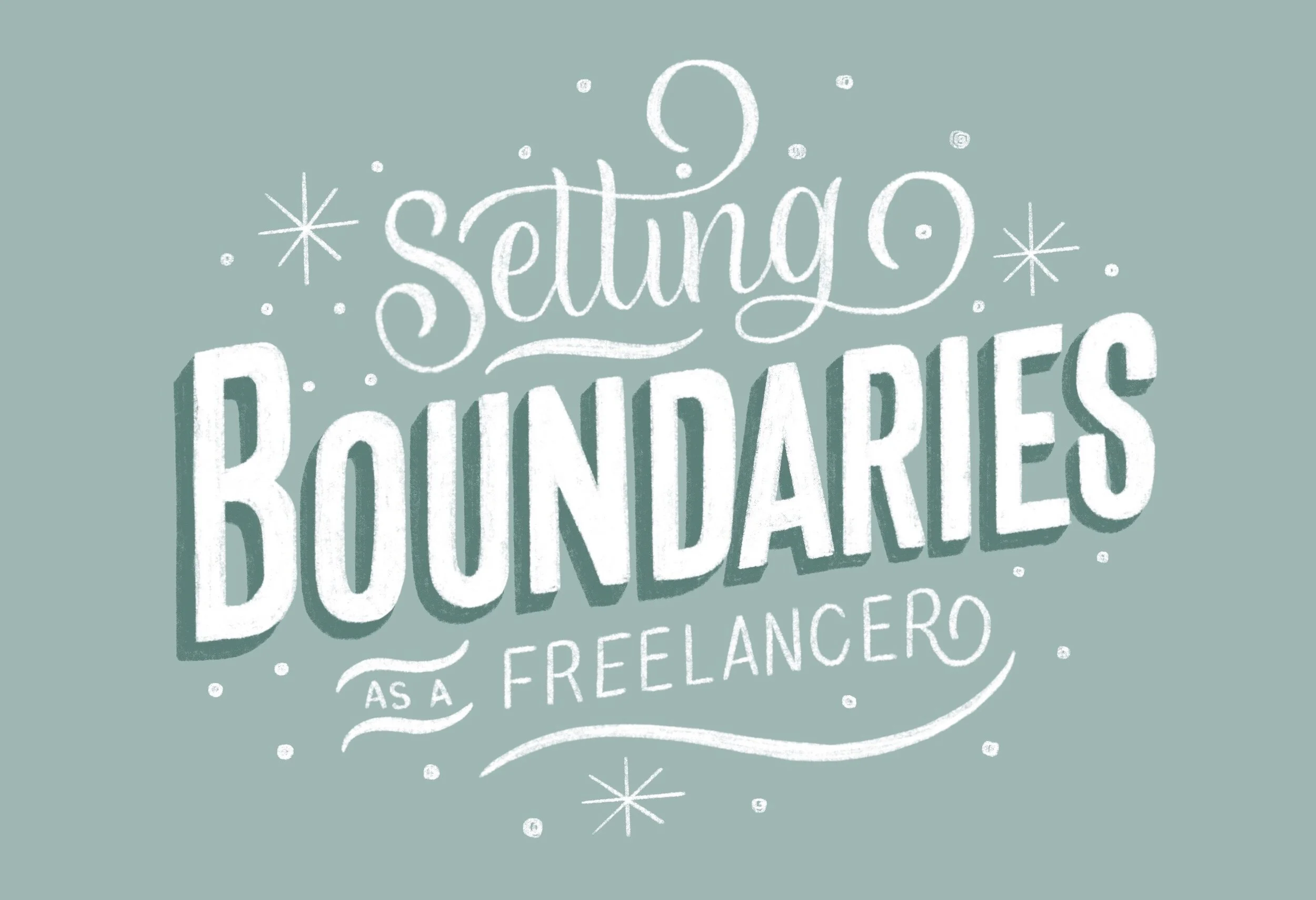How To Set Clear Boundaries As A Freelancer
As a freelancer you have a crazy job. How many of us have worked frantically into the night on a “urgent” project for a client, or have had to bust our out laptop during a vacation to send off files? Or worst of all, how many of us have lost money on a project because the client had a million revisions and the project took you twice as long as you planned for?
We’ve all been there. But what if I told you that 90% of all the struggles we deal with as freelancers could be fixed by setting clear boundaries and expectations with out clients? The underlying problem with most client/ freelancer relationships is bad communication. In this post, I’ll be sharing 6 areas of your work where you can set clear boundaries and how doing so will give you peace of mind and will ultimately make you more money.
1. TIME
Setting boundaries of your time is SUPER important. To illustrate this point, let me tell you a story. When I first started my business Type Affiliated, I was also going to school full time and worked 30 hours a week as a designer at an ad agency. Because of my busy schedule, I had to work on freelance projects whenever I had time, which meant some very early mornings and some super late nights. Eventually I was able to quit the job at the agency and finished school, which meant I could do freelance full time, but I would still find myself working from 8 in the morning until 10 or 11 at night. I was so used to working crazy hours that it didn’t bother me, and if a client emailed me at 5:00pm with an “urgent” change to a project, I would work late because that’s what I was in the habit of doing.
FINALLY I realized something: I am my own boss, and I do not have to work myself to death. After that point, I set strict hours with my clients, letting them know that I worked from 9:00-5:00 Monday-Friday and that if they sent me last minute changes at the end of the day (or the end of the week) that they would just have to wait. Since doing that, life has been a DREAM. My clients are more aware of my more respectful of my schedule, and I’m able to finally enjoy my evenings after work.
2. SCOPE AND PAY
When starting out working with a client, it’s important to get clear about what the scope of the project is. Are you just designing a logo? Or are you going to be designing a logo in horizontal, vertical and icon formats as well as providing a style guide with colors, fonts and photography direction? See the difference?
Defining the scope of the project BEFORE you start working (and getting it all down on paper in a signed contract) is crucial to making sure you and the client are on the same page. If you are not clear upfront about what you will be providing and where you draw the line, then you might end up doing more work than you bargained for without additional pay. Set clear boundaries when deciding on the scope of a project (how many sketches you’ll send, how many revisions you’ll do, etc.) and don’t be afraid to tell a client no or to ask for more money when they want you to do work beyond what was originally agreed upon.
3. TIMELINE AND DEADLINES
Timelines and deadlines are an especially interesting topic, because they depend heavily on participation from the client.
There have been so many times where a client has come to me saying “I need this thing to go to print in 5 days, can you design me something by then?” and then doesn’t send me any direction or wording until a day before it goes to print, giving me only one day to work. Be clear with your clients that RUSH JOBS COST MORE. Be extremely clear with your clients about how long it will take you to complete each stage of the design process, and be clear about your expectations of them to hit their deadlines as well.
If you are constantly letting your clients send you “urgent” rush work, then you are essentially telling them that it’s OK, and they will continue to send you super urgent, stressful, last minute projects in the future. It’s fine to do last minute work for a loyal client every once in a while, but be clear that it’s not the norm. Your clients won’t respect your time (and also won’t be grateful when you do rush a project for them,) if you are constantly willing to sacrifice yourself to do last minute work.
4. MODE OF CONTACT
My goal for 2020 was not to let my clients have my phone number anymore. As a freelancer, it can be hard to separate work time from normal life, and when clients would text me about a project on a Saturday night, I would stress out and would feel obligated to text them back even if I was on a date or out with friends.
As a way of setting boundaries, I now never give out my phone number to clients except in a few rare clases. I work strictly through email, and I check my email three times a day, right in the morning, at lunch and when I’m finishing up for the day. If you are constantly checking your texts or your emails, you will be more distracted and less productive. Be upfront and clear with your clients about how they can contact you, and when they should expect a response.
5. USAGE & LICENCING
The last, and one of the most important boundaries you need to set with your clients is usage rights! How are they allowed to use the design you’ve created for them? This is another reason why it is so important to have a contract and to understand licensing and who has ownership of the artwork.
If you are creating a t-shirt design for a client, then you better make darn sure that you explain in your contract that the design is EXCLUSIVELY for t-shirts. If that client wants to use the t-shirt design you created on other products, then they need to pay you more for it. As an artist, you need to protect your work, but if you send a client a design without making them sign a contract, don’t be sad when you’re seeing that design on tons of products and you’re not getting paid for any of it.
6. JUST SAY NO
If a client is asking you to do something unreasonable (or worse, illegal,) remember that you can SAY NO. Yes, we need clients to survive, but if a client is constantly causing you grief, go find a new one. Stand your ground, be clear about your boundaries, and don’t be afraid to say no to a project or an unreasonable client request.
TO WRAP IT UP
I think being a freelance artist is the best job in the world, but it can start to make you really miserable really fast if you do not set clear boundaries with your clients. Remember to be clear and upfront ALWAYS and not to be afraid to say no or to assert your expectations in a contract.
Do you have any questions, comments, or stories about setting boundaries in your business? Comment below!






